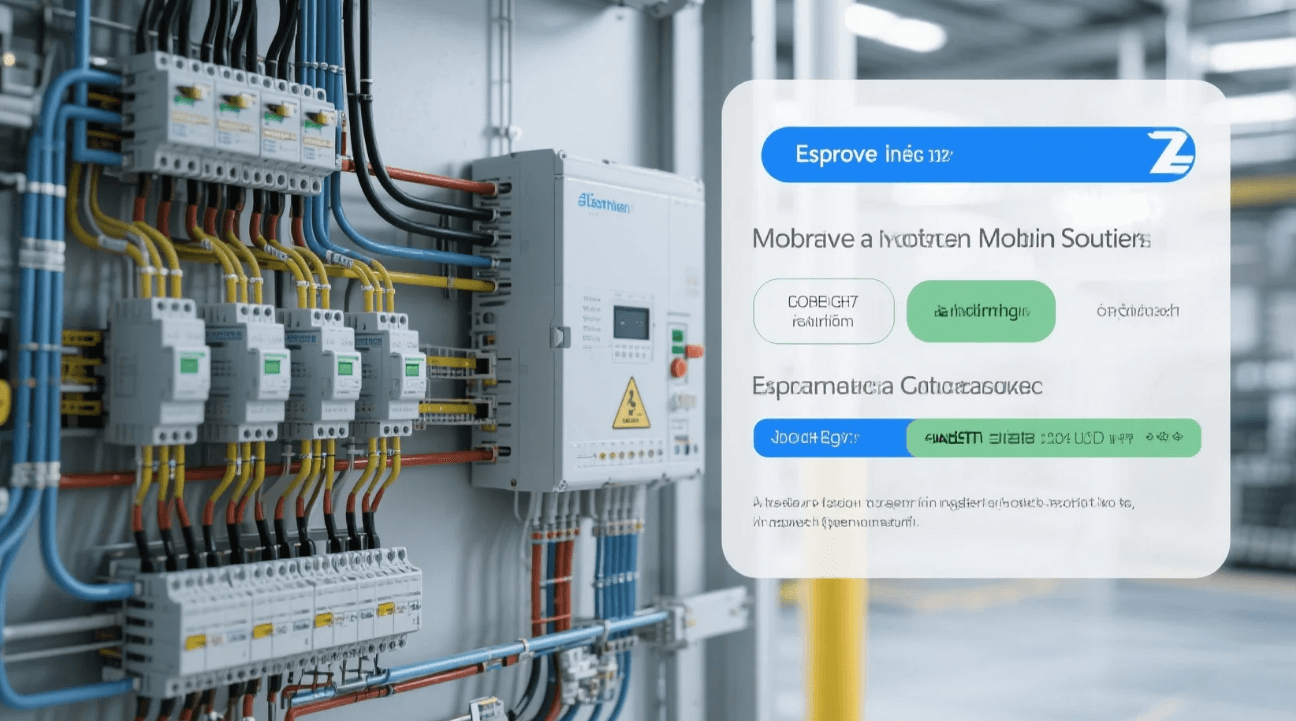- Allen-Bradley
- BANNER
- Baumer
- Bosch Rexroth
- Danfoss
- Eaton
- Festo
- Honeywell
- IFM
- Leuze
- Logitech
- Mitsubishi
- MTL
- Nidec
- Omron
- FUCILI DI PEPPERL
- Modulo diagnostico avanzato
- Cavo di collegamento
- Codificatore
- Barriera bus di campo
- Multiplexer HART
- Sensore di inclinazione
- Sensore induttivo
- Unità di valutazione RFID
- Scheda di terminazione
- Sensore a ultrasuoni
- Attuatori per valvole
- Barriera di sicurezza e isolatore
- Barriera di protezione contro le sovratensioni
- Contatto Phoenix
- PILZ
- PULS
- Rexroth
- SICK
- Siemens
- Schneider
- Turck
- Wago
- Yokogawa
Soluzioni di mobilità per impianti elettrici: Prestazioni e sicurezza

Introduzione
In today’s fast-evolving power landscape, Mobility Solutions enable smarter, safer, and more efficient electrical systems. Within the first 100 words, you’ll learn how these integrated approaches—combining hardware, software, and services—address common challenges in installation, operation, and maintenance. By delivering real value to electrical product users, this guide dives deep into key applications, core benefits, and best practices.
Defining Mobility Solutions in Electrical Context
Concept & Scope
At its core, Mobility Solutions refers to modular systems that facilitate the movement, monitoring, and management of electrical power. Rather than standalone products, they are composed of intelligent sensors, communication modules, and cloud-based analytics platforms that work together seamlessly.
Key Components
- Smart Connectors & Switchgear: Enabling hot-swappable connections without downtime.
- Wireless Sensor Networks: Monitoring voltage, current, temperature, and load in real time.
- Edge Computing Units: Local data processing reduces latency and bandwidth needs.
- Centralized Dashboards: Cloud portals that visualize system health and forecast maintenance requirements.
Core Benefits of Mobility Solutions
Enhanced Operational Efficiency
By deploying mobile sensors and predictive-analytics software, unplanned outages can be reduced by up to 30%. Consequently, maintenance crews are dispatched only when truly needed, which lowers labor costs and extends equipment life.
Improved Safety & Compliance
Safety is critical in electrical installations. With integrated leak-and-arc detection modules, fault conditions are identified instantly, allowing systems to be de-energized before accidents occur. Furthermore, regulatory reports can be generated automatically, ensuring compliance with standards like NFPA 70E.
Scalability & Flexibility
Systems are designed to grow: new nodes and devices are commissioned via plug-and-play mechanisms, so expansions or relocations are simplified. This modularity benefits commercial buildings, data centers, and mobile field sites alike.

Applications Across Industries
Automazione industriale
In manufacturing plants, Mobility Solutions are used to track power consumption per machine, enabling dynamic load balancing. Smart breakers can be reconfigured on the fly, supporting flexible production lines and minimizing energy waste.
Integrazione delle energie rinnovabili
Solar and wind farms rely on mobile inverters with integrated grid-sync modules. These devices are mounted on trailers or skid frames and can be repositioned as sunlight and wind patterns shift. Data from weather-proof sensors is collected and analyzed to optimize generation schedules.
Commercial & Residential Buildings
From smart elevators to EV charging stations, mobility-driven switchgear and metering systems allow facilities managers to monitor usage patterns, implement demand-response programs, and reduce peak bills. Meanwhile, tenant apps provide real-time energy insights.
Technical Deep Dive
Wireless Sensor Meshes
Wireless sensors communicate using mesh protocols (e.g., Zigbee, Thread,GB), creating self-healing networks. If a node fails, data is automatically rerouted, ensuring no single point of failure. Battery-powered nodes can last years without replacement.
Edge Analytics & AI
Edge gateways preprocess raw sensor data, running anomaly-detection algorithms locally. Only flagged events or summaries are sent to the cloud—thus cutting data costs and safeguarding privacy. Over time, machine-learning models refine alerts, reducing false positives.
Integration with SCADA & BMS
Seamless interoperability is achieved via standard protocols (Modbus, OPC UA). Mobility solutions are integrated into existing SCADA (Supervisory Control and Data Acquisition) and Building Management Systems (BMS), so operators enjoy unified control screens and fewer silos.

Implementation Best Practices
Site Assessment & Planning
A detailed survey should be performed before deployment. Electrical layouts, load profiles, and environmental conditions (temperature, humidity, dust) must be documented. Such upfront work ensures that sensors and enclosures are properly specified.
Commissioning & Calibration
Upon installation, each device is calibrated against known references (voltage sources, current shunts). Automated routines verify connectivity and data accuracy. Commissioning reports—generated by mobile apps—document compliance with project specs.
Training & Change Management
Personnel must be trained on both hardware and software. As systems are often commissioned remotely, clear protocols for updates, security patches, and emergency procedures should be established. User manuals and e-learning modules expedite onboarding.
Cost-Benefit Analysis
Upfront vs. Lifecycle Costs
While initial investment in sensors, edge devices, and software licenses can appear significant, total cost of ownership (TCO) is often lowered by 25–40% over five years through reduced downtime, deferred capital expenditure, and streamlined operations.
ROI Drivers
- Downtime Reduction: Faster fault detection prevents lengthy outages.
- Energy Savings: Dynamic load management and demand-response integration lower utility bills.
- Maintenance Optimization: Condition-based maintenance avoids needless part replacements.
Sustainability & ESG Impact
Carbon Footprint Reduction
By optimizing power distribution and trimming peak loads, energy consumption is lowered—thus cutting greenhouse-gas emissions. Moreover, when paired with renewable sources, mobility modules support seamless transitions to cleaner energy.
Circular Economy Practices
Many components are designed for disassembly and recycling. Sensor casings use recyclable plastics; battery packs employ second-life strategies in stationary storage once they no longer meet mobility requirements.
Domande frequenti
Q1: What are the main components of electrical Mobility Solutions?
A: They include smart connectors, wireless sensor nodes, edge gateways with analytics, and cloud-based dashboards.
Q2: How much energy can be saved with these systems?
A: Savings of 10–20% are common in commercial buildings; industrial sites may see even higher reductions through load balancing.
Q3: Is my existing SCADA system compatible?
A: Yes—most mobility modules support open protocols (Modbus, OPC UA) for seamless integration.
Q4: What’s the typical ROI period?
A: Organizations often recoup their investment within 18–24 months via reduced downtime and energy costs.
Q5: How secure are these solutions?
A: Security is enforced at multiple layers: device authentication, encrypted communications, and regular firmware updates.

